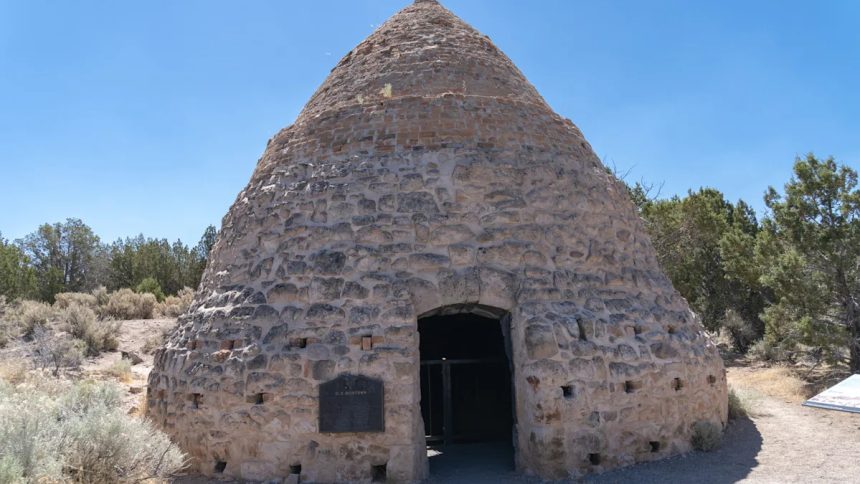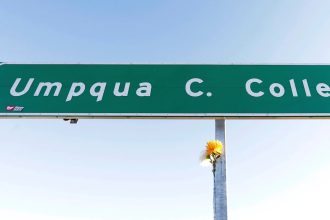When Joseph Smith, founder of the Church of Jesus Christ of Latter-day Saints, was killed by a mob in Illinois in the 1840s, his disciple Brigham Young assumed church leadership and led thousands of followers westward. They settled in what’s now Salt Lake City, Utah, seeking religious freedom and a self-sufficient life. To sustain that vision, in 1850, Young launched what he called the “Iron Mission” — a plan for regional ironworks — appointing roughly 150 settlers to travel south to Parowan, a small support settlement near iron ore deposits. Some continued about 20 miles further south to establish Cedar City, closer to Iron Mountain and better positioned for mining. At first, Cedar City was successful. But persistent issues and inefficiencies stalled production. By 1868, a new settlement called Iron City (now called Old Iron Town) was founded 24 miles west, to be closer to the raw materials.
Iron City was a classic frontier town with a foundry, blacksmith shop, charcoal kiln, boarding house, post office, and school. At its peak in 1871, it produced up to 7 tons of iron per day, shipping the metal to the Utah Western Railroad and various construction projects, including the St. George Tabernacle. But even with its strategic location, Iron City couldn’t escape the frontier’s harsh realities. Transportation problems, economic instability, and the Panic of 1873 that sparked the Long Depression of 1873-1879 ultimately shut down the town. Unlike Cedar City, now a vibrant university town and arts hub known as “Festival City USA” or even Parowan, a quiet, historic town considered the “Mother of Southern Utah” just 40 miles from Iron City, the final outpost of Young’s Iron Mission simply couldn’t sustain itself. And so, once-thriving Iron City vanished. Today, ghostly Old Iron Town is on the National Registry of Historic Places.
Read more: 12 Destinations And Attractions That Should Absolutely Be Considered Wonders Of The World
Old Iron Town is a leg-stretching pit stop in the American West
The beehive-shaped kiln at Old Iron Town – melissamn/Shutterstock
Old Iron Town is the kind of place that nature’s slowly reclaiming. While some old mining artifacts and ruins remain, much of the appeal lies in the quiet paths that wind through the abandoned town. Just 35 miles from the Kolob Canyons entrance to Zion National Park, the uncrowded gateway to the area’s scenic canyons, it’s the perfect spot for a quick detour while road-tripping through Southern Utah. The ruins are loosely tied to Cedar City’s Frontier Homestead State Park, and visitors can stroll trails, read placards detailing the area’s history and mining operations, and explore the remnants of brick kilns and crumbled building foundations, including a furnace and foundry. There’s no admission fee.
“Found charcoal kiln to be the most impressive,” wrote one Tripadvisor reviewer. “If you go in winter or wet months be sure to have boots or change of footwear as the trail can be a bit muddy.” Only one of the two original beehive-shaped brick kilns survives. Historically, wood was slowly burned inside the kilns, which were vented to control the amount of oxygen that fueled the flames. The slow-burning wood turned into charcoal that smelters used to extract the ore from the earth. You can step inside the kiln and see the 150-year-old soot.
Old Iron Town Historic Site appears in GPS apps and is located a few miles off State Route 56, on Old Irontown Road. From Cedar City, one Tripadvisor reviewer recommends detouring down Iron Springs Road to view several large open iron mines, some of which were still active in recent years. You can also continue 67 miles south to St. George, a desert oasis and Southern Utah’s largest city, where the tabernacle built from Iron City ore still stands.
Ready to discover more hidden gems and expert travel tips? Subscribe to our free newsletter for access to the world’s best-kept travel secrets.
Read the original article on Islands.









